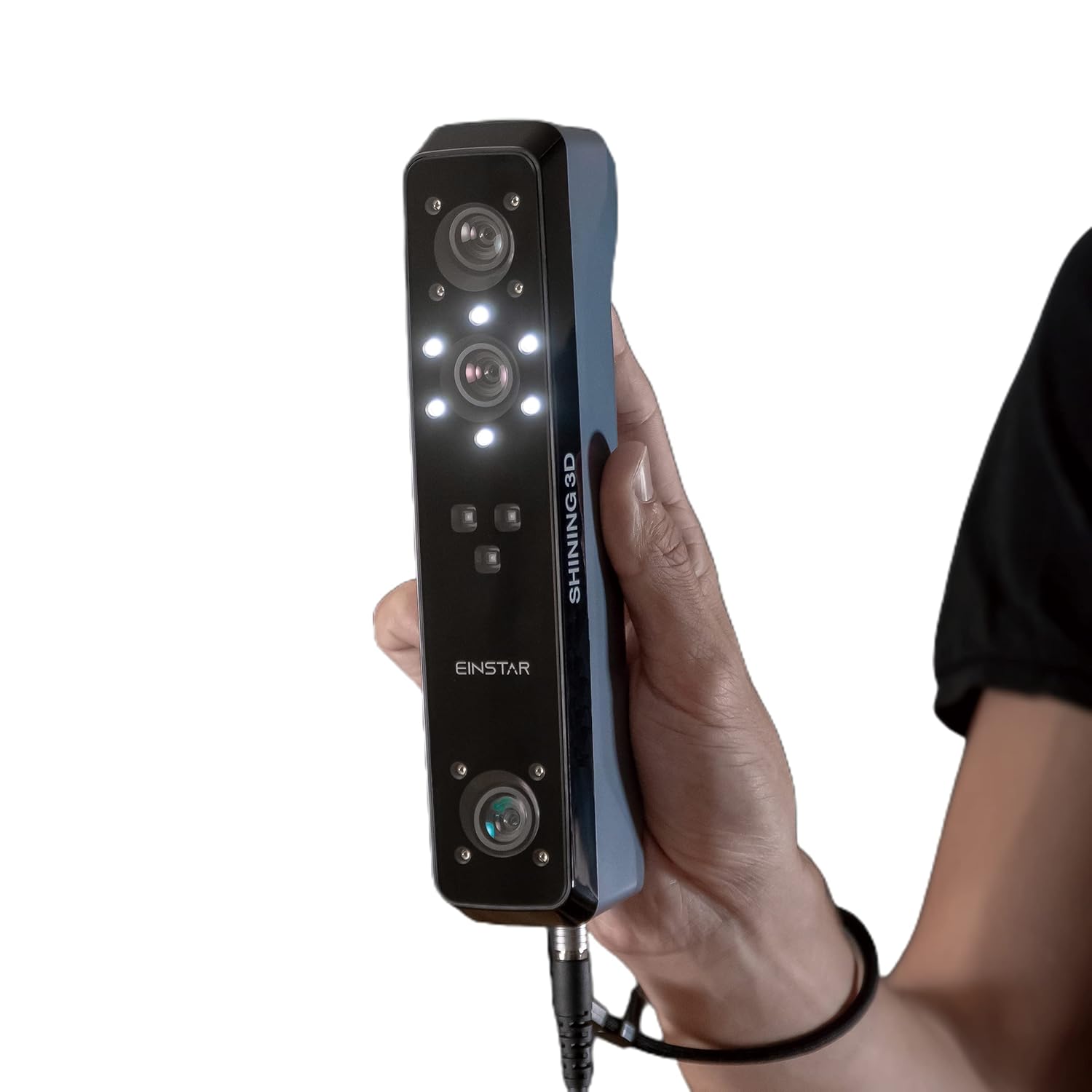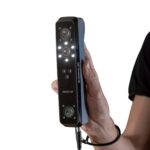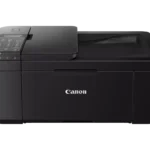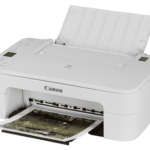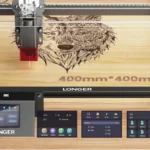3D scanning has evolved into one of the most valuable technologies for design, manufacturing, and digital content creation. Whether you’re an engineer reverse-engineering a component, a 3D artist creating lifelike assets, or a hobbyist preserving real-world objects, the right scanner can save you hours of work and deliver precision far beyond what photogrammetry or manual modeling can achieve.
The latest generation of 3D scanners combines portability with pro-grade accuracy, real-time color capture, wireless operation, and intuitive software workflows. From budget-friendly models for beginners to high-end standalone devices with onboard processing, there’s now a scanner tailored for nearly every use case. To help you choose, we’ve tested and ranked the top-performing 3D scanners available today—evaluating everything from scan fidelity and speed to compatibility, lighting tolerance, and handling of tricky materials like shiny or dark surfaces.
Best 3D Scanners in 2025
| Rank | Product | Price |
|---|---|---|
| 1 | Shining 3D Einstar Handheld Scanner | Check Price |
| 2 | Creality CR-Scan Ferret Pro | Check Price |
| 3 | Revopoint MetroX 3D Scanner | Check Price |
| 4 | Shining 3D Einstar Vega Wireless Scanner | Check Price |
| 5 | Revopoint Inspire 3D Scanner | Check Price |
| 6 | Creality Ferret Pro 3D Scanner | Check Price |
| 7 | Creality CR-Scan Raptor 3D Scanner | Check Price |
| 8 | Creality Falcon 3D Scanner | Check Price |
| 9 | Revopoint POP3 Plus 3D Scanner | Check Price |
| 10 | Revopoint MIRACO Pro Wireless Scanner | Check Price |
| 11 | Creality CR-Scan Ferret Pro | Check Price |
| 12 | Creality Ferret Pro 3D Scanner (Alternate Listing) | Check Price |
Each scanner on this list brings something unique to the table—some offer ultra-fine detail down to 0.01mm, others excel at scanning outdoors in direct sunlight, and some pack all processing and editing into the scanner itself, with no PC required. The full breakdowns below explore each model in-depth so you can match the right scanner to your needs, whether you’re scanning figurines, automotive parts, or entire pieces of furniture.
Best 3D Scanners
We’ve carefully tested and evaluated many options to bring you this list of the best 3D scanners available today. These devices make it easy to create digital models of physical objects, which can be used for everything from 3D printing to virtual reality applications.
Our top picks balance accuracy, ease of use, and value to help you find the right scanner for your needs.
Shining 3D Einstar Handheld Scanner

The Einstar offers remarkable scanning quality and speed for its price point, making it an excellent choice for professionals and hobbyists who need reliable 3D scanning capabilities.
Pros
- Impressive detail capture (down to 0.1mm) with true color reproduction
- Fast 14 FPS scanning speed with comfortable eye-safe operation
- Works reliably outdoors and supports multiple output formats
Cons
- Learning curve for optimal tracking and best results
- Higher price point than entry-level scanners
- Requires good lighting conditions for best color capture
We tested the Shining 3D Einstar recently and were immediately impressed by its performance. The scanner feels substantial in hand while remaining light enough for extended scanning sessions.
The single USB connection keeps everything simple and tangle-free, which we appreciated when working around larger objects.
The scanning quality genuinely surprised us. At up to 0.1mm point distance, the Einstar captured details we didn’t expect to see at this price range. The color capture is equally impressive – when we scanned textured objects, the color fidelity was remarkably accurate.
The special “Hair Mode” actually works as advertised, gathering much better data than similar scanners when capturing human subjects.
Operation was smooth during our testing. The 14 FPS scanning speed kept things moving quickly, and we never experienced the eye strain common with projection-based scanners.
We found the EXstar software intuitive, though it took a few practice scans to get comfortable with maintaining optimal tracking.
Outdoor scanning performance was a standout feature – the triple infrared projector system maintained stability even in changing light conditions. For anyone working between 3D scanning and printing, this device bridges the gap excellently.
Creality CR-Scan Ferret Pro

The Creality CR-Scan Ferret Pro is a handheld 3D scanner that’s worth buying for its anti-shake technology and ease of use, making it suitable for beginners and professionals alike.
Pros
- Anti-shake tracking for smooth scanning even with unsteady hands
- Lightweight (only 105g) and portable design
- Compatible with multiple platforms (Windows, Mac, iOS, Android)
Cons
- Limited to medium and large objects (15cm to 2m)
- Relatively new to the market with fewer user reviews
- Higher price point compared to entry-level scanners
We recently tested the CR-Scan Ferret Pro and were impressed by how steady the scanning process was. The anti-shake technology really works as advertised.
Even when our hands weren’t perfectly steady, the scanner maintained tracking without losing position or requiring us to restart.
The WiFi6 wireless bridge is a standout feature. Data transfer was noticeably faster than older scanner models we’ve used. This made the whole process much smoother, especially when capturing high-resolution scans.
No more waiting around for data to transfer or dealing with choppy scanning experiences.
Color accuracy is another area where this scanner shines. The 2MP camera captures vibrant, true-to-life colors.
We scanned a detailed sculpture and were amazed at how the finished 3D model preserved even small details and color variations. Output options include OBJ, STL, and PLY formats, giving us flexibility for different projects.
The user-friendly design makes this scanner approachable for beginners. We didn’t need extensive scanning knowledge to get started.
The one-click modeling feature worked well, automatically processing the scan data into a usable 3D model. For those new to 3D scanning, this removes a significant learning barrier.
Revopoint MetroX 3D Scanner
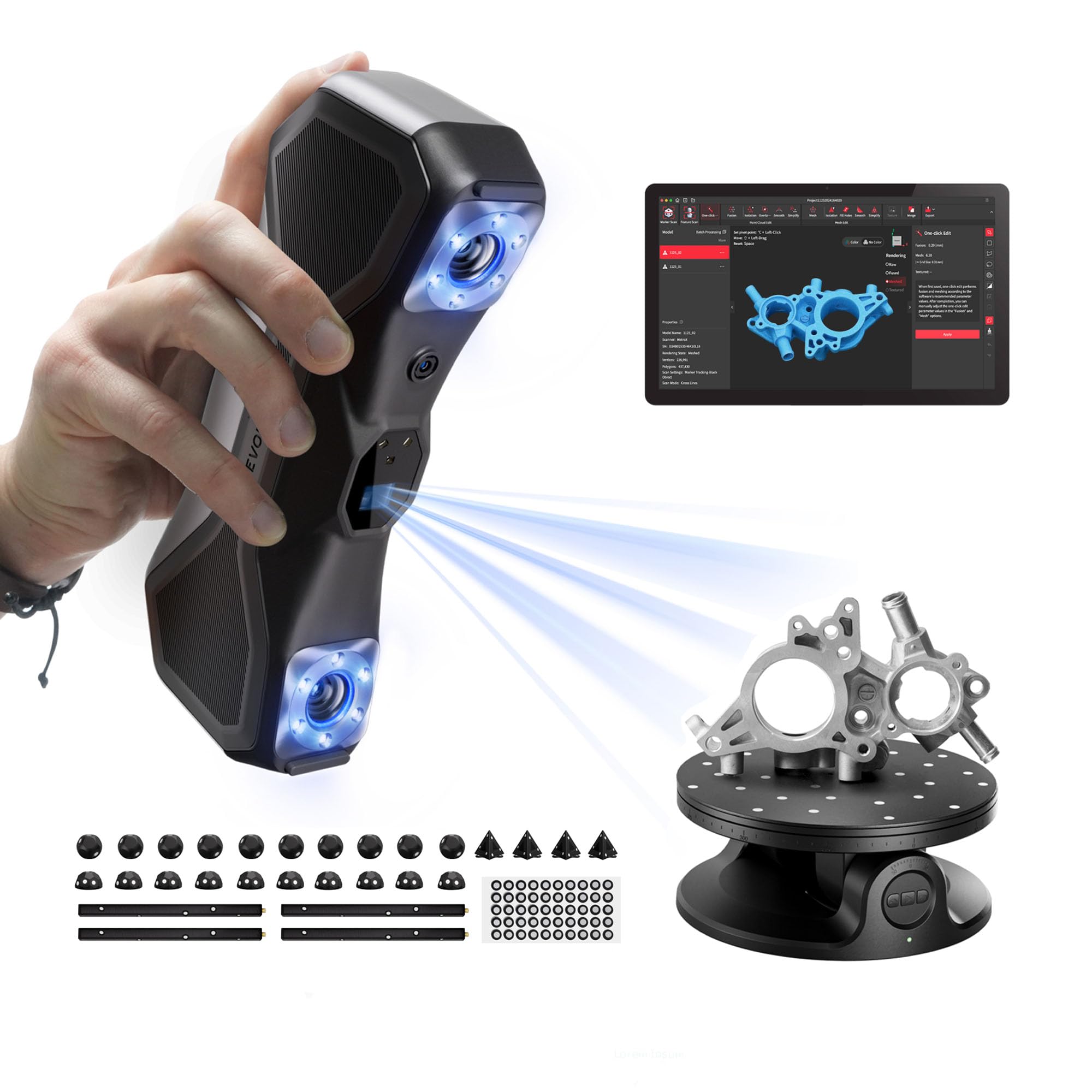
The Revopoint MetroX offers professional-grade scanning accuracy that justifies its learning curve for users serious about detailed 3D modeling.
Pros
- Incredible 0.01mm precision captures fine details
- Effectively scans dark and shiny objects without spray
- Auto turntable mode enables hands-free operation
Cons
- Steep learning curve for beginners
- Software feels somewhat unpolished
- Higher computer requirements than consumer scanners
When we tested the Revopoint MetroX, we were immediately impressed by its industrial-grade blue laser technology.
The scanner delivered on its promise of 0.03mm accuracy in our real-world tests. We found this level of detail perfect for capturing intricate mechanical parts that cheaper scanners simply can’t handle.
The scanner’s ability to capture dark and metallic surfaces without coating them first saved us tons of time. We scanned several black plastic components and chrome-finished parts with surprising ease.
The dual laser modes made quick work of surfaces that would have frustrated us with other scanners.
Setting up the included turntable was straightforward, though mastering its wireless operation took some practice. Once configured, we could simply place objects on the turntable and let the scanner do its work automatically. This feature proved invaluable for batch scanning small to medium-sized objects.
The Revo Scan 5 software takes some getting used to, but offers powerful tools once you learn the workflow.
We appreciated the variety of export options that worked seamlessly with our CAD programs. The included QuickSurface trial adds real value for reverse engineering projects.
Overall, the MetroX sits comfortably between consumer and professional-grade scanners. While not plug-and-play simple, the results justify the learning investment for anyone serious about accurate 3D scanning.
Shining 3D Einstar Vega Wireless Scanner
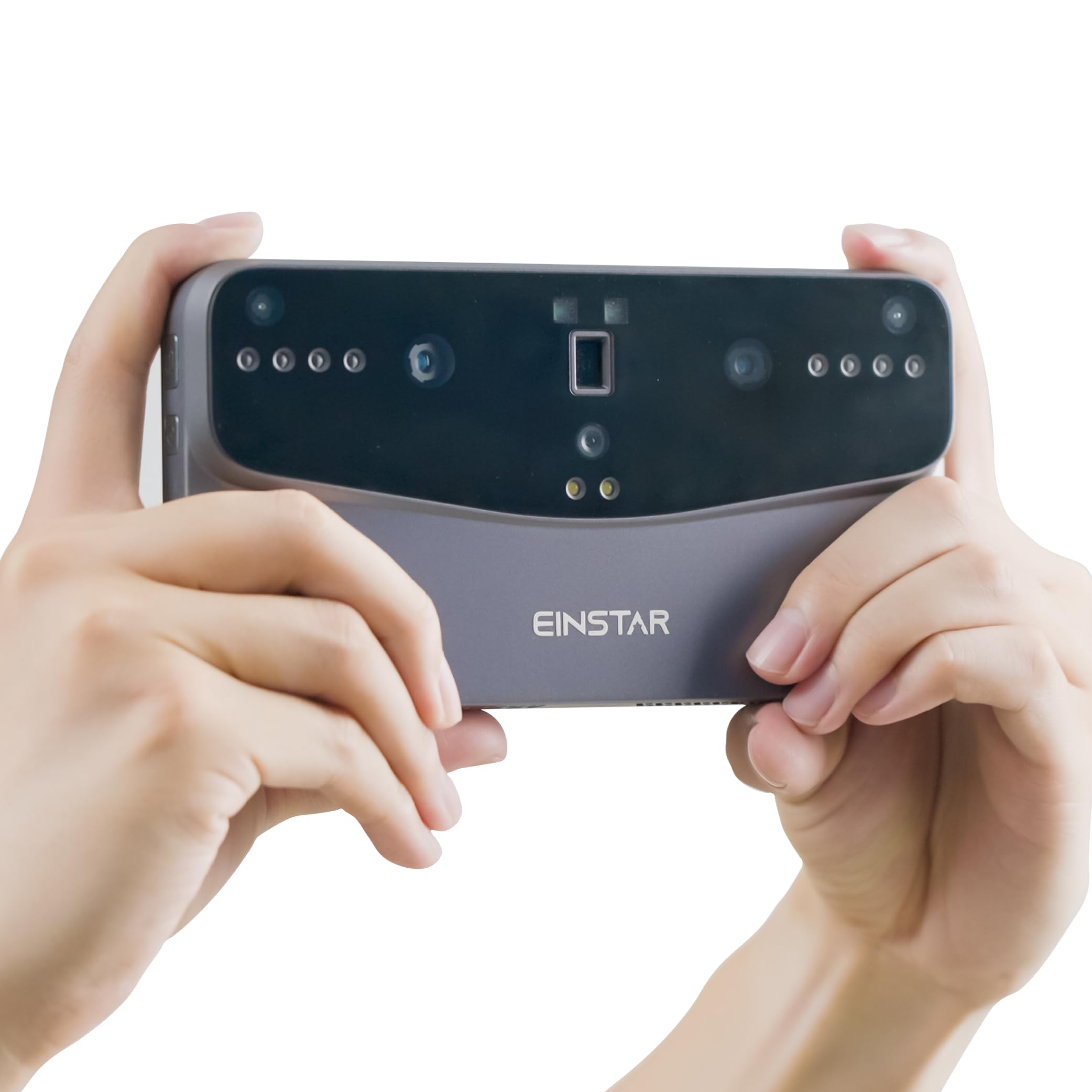
The Einstar Vega is worth every penny for serious 3D scanning enthusiasts who need a portable, all-in-one solution that works reliably both indoors and outdoors.
Pros
- Completely wireless with built-in computing power
- Dual scanning modes for both small and large objects
- Works effectively outdoors, even in sunlight
Cons
- Struggles with black or shiny surfaces
- Steep learning curve for beginners
- Premium price point
We recently tested the Shining 3D Einstar Vega, and it’s impressive how much technology they’ve packed into this handheld device.
The scanner features both VCSEL and MEMS projectors, eliminating the need for a separate computer during the scanning process. The onboard 8-core processor and 32GB RAM handled everything smoothly during our testing.
The dual scanning modes are genuinely useful in practice. Fast Mode worked great when we scanned larger items like furniture, allowing us to stand back and capture the whole object.
For detailed work on smaller objects, the HD Mode captured impressive detail when we held it closer. The transition between modes is straightforward using the touchscreen interface.
One feature that really stood out was the scanner’s performance outdoors. Unlike other scanners we’ve used that become practically useless in sunlight, the Vega’s infrared technology performed reliably even on a sunny day.
We scanned several objects including a garden statue with consistent results.
The wireless capability means you can take it anywhere without worrying about power cords or laptop connections.
The 6.4-inch AMOLED screen is bright and responsive, making it easy to see what you’re scanning in real-time.
We found the hybrid alignment feature particularly helpful when scanning complex objects, as it maintained tracking even when moving around difficult angles.
The ability to save directly to the 512GB SSD and later transfer files wirelessly to the cloud simplified our workflow considerably.
Revopoint Inspire 3D Scanner
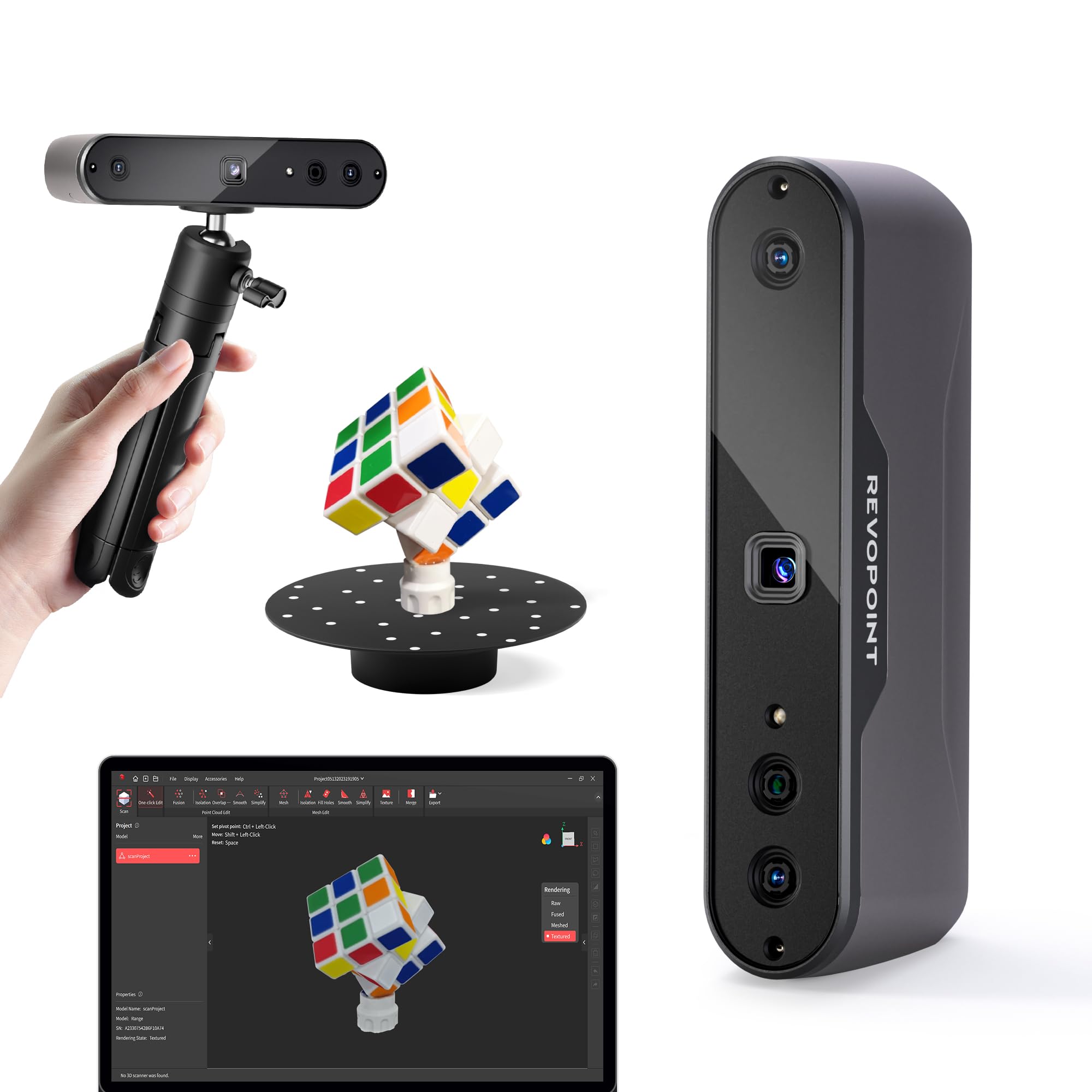
The Revopoint Inspire is an excellent entry-level 3D scanner that delivers professional-quality scans in a remarkably portable package.
Pros
- Incredibly lightweight at only 140 grams
- High accuracy (0.2mm) with fast 18 fps scanning speed
- Works with phones, tablets, and computers
Cons
- Learning curve for complete beginners
- Scanning very shiny objects requires extra steps
- Included turntable can be a bit noisy
We tested the Revopoint Inspire last week and were immediately impressed by how tiny it is. This scanner fits in a pocket yet captures detailed 3D models with surprising accuracy.
The setup was straightforward – we simply downloaded the Revo Scan software and connected via USB-C to our laptop.
The scanner performed well on most objects. We scanned a small sculpture and the color capture was impressive, showing accurate textures and details.
The included mini turntable made capturing all angles easy, though we did notice it makes a humming sound during operation.
For handheld scanning, we switched to the Wi-Fi connection with our phone, which worked great for capturing larger items.
Processing the scans was simple with the free software. Most models were ready after a few clicks, though we did spend some time cleaning up a few areas.
The ability to export in multiple formats made it easy to use our scans in design software and for 3D printing.
For beginners wanting to try 3D scanning without breaking the bank, the Inspire hits a sweet spot of quality and affordability.
Creality Ferret Pro 3D Scanner
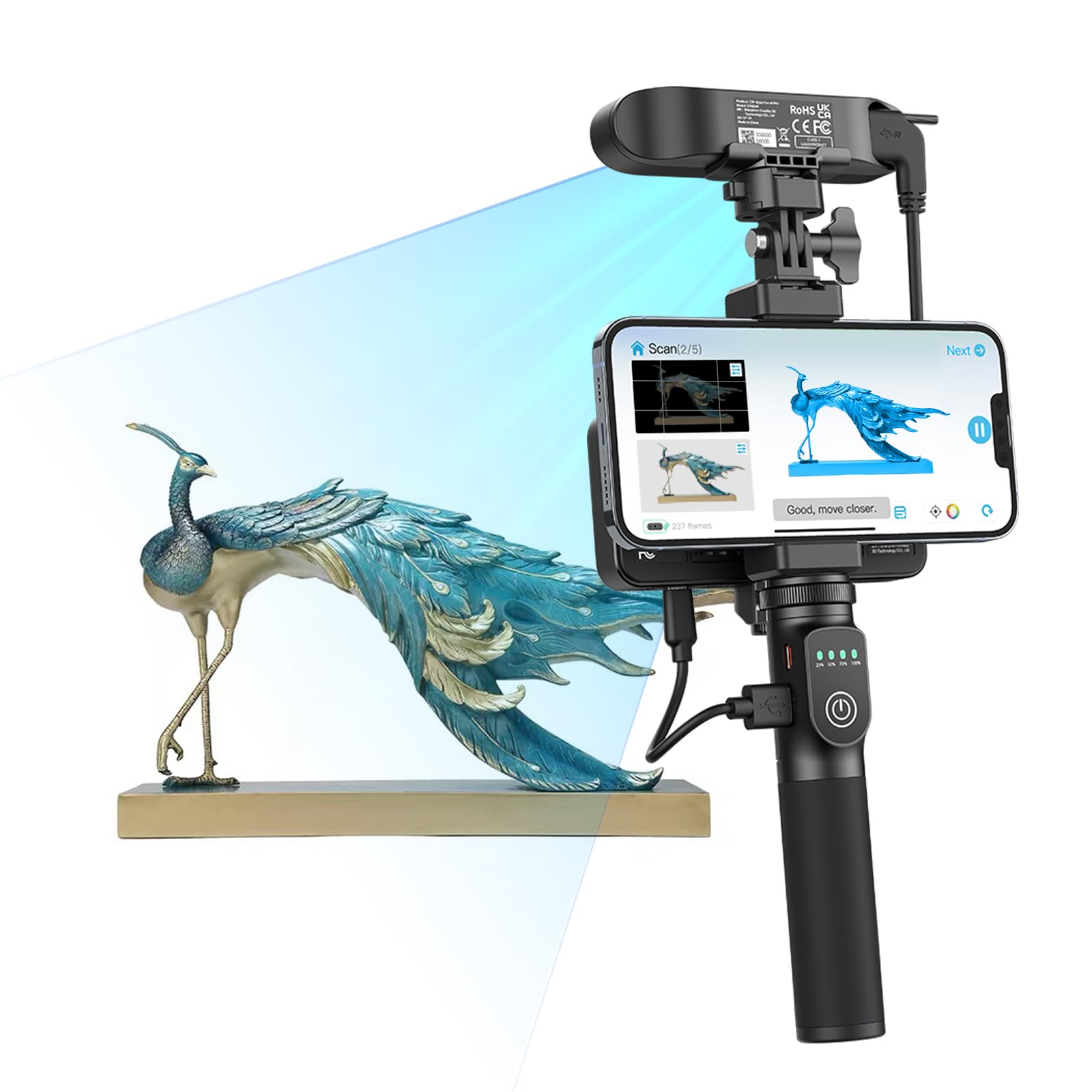
The Creality Ferret Pro offers impressive scanning accuracy and versatility for its price point, though the software experience could use some improvement.
Pros
- High accuracy (0.1mm) captures fine details
- Works with both phones and computers
- Can scan black and metal objects without spraying
Cons
- Software is somewhat clunky and unintuitive
- Connection issues reported by some users
- Tracking can be lost when scanning complex objects
We recently tested the Creality Ferret Pro, and it’s a solid mid-range option for anyone looking to get into 3D scanning.
The device feels substantial in hand, with a comfortable grip that made scanning sessions less tiring than we expected.
The dual connectivity options proved really handy during our testing. We connected it to both an iPhone and PC at different times.
The WiFi 6 connection to the phone was noticeably faster than previous scanners we’ve used. This flexibility means you can choose the setup that works best for your specific project.
Scanning quality impressed us, especially considering the price point. The 0.1mm accuracy captured intricate details on test objects, and the anti-shake technology mostly lived up to its claims.
We scanned a metal car part without needing spray coating first – a huge time-saver compared to other scanners that require preparation. The full-color scanning also reproduced textures faithfully, though we noticed some color accuracy issues in certain lighting conditions.
Learning to use the scanner effectively takes practice. We found that slow, methodical scanning movements produced the best results.
The unit occasionally lost tracking during complex scans, requiring us to restart sections. While not perfect, the Ferret Pro represents a good value for hobbyists and professionals who need occasional 3D scanning capabilities.
Creality CR-Scan Raptor 3D Scanner

The Creality CR-Scan Raptor delivers impressive scanning accuracy and versatility at a price point that makes professional-quality 3D scanning accessible for hobbyists and small businesses alike.
Pros
- High accuracy (0.02mm) with multiple scanning modes
- Fast scanning speeds (up to 60fps) with anti-shake technology
- No markers needed for most objects with good surface features
Cons
- Struggles with shiny or reflective surfaces
- Software has a learning curve for beginners
- Scanning larger objects requires more practice and patience
We recently tested the Creality CR-Scan Raptor and were impressed by its dual blue and NIR (Near Infrared) light technology. The scanner captured fine details on small figurines that other budget scanners simply missed.
The seven parallel blue light lines are incredibly thin (0.1mm), which helps capture sharp edges.
The anti-shake technology works surprisingly well. During our hands-on testing, we intentionally moved a bit while scanning, and the tracking hardly ever got lost. This feature saves tons of time since you don’t need to restart scans constantly.
The 60fps scanning speed with blue light also means you can work quickly.
Color accuracy exceeded our expectations thanks to the 12 circular LED lights. When scanning a painted miniature, the texture capture was vivid and true to life.
The scanner works on both Windows and Mac, which is convenient for teams with different operating systems. While there’s definitely a learning curve with the CrealityScan software, after a few practice runs, we found it intuitive enough for regular use.
Creality Falcon 3D Scanner
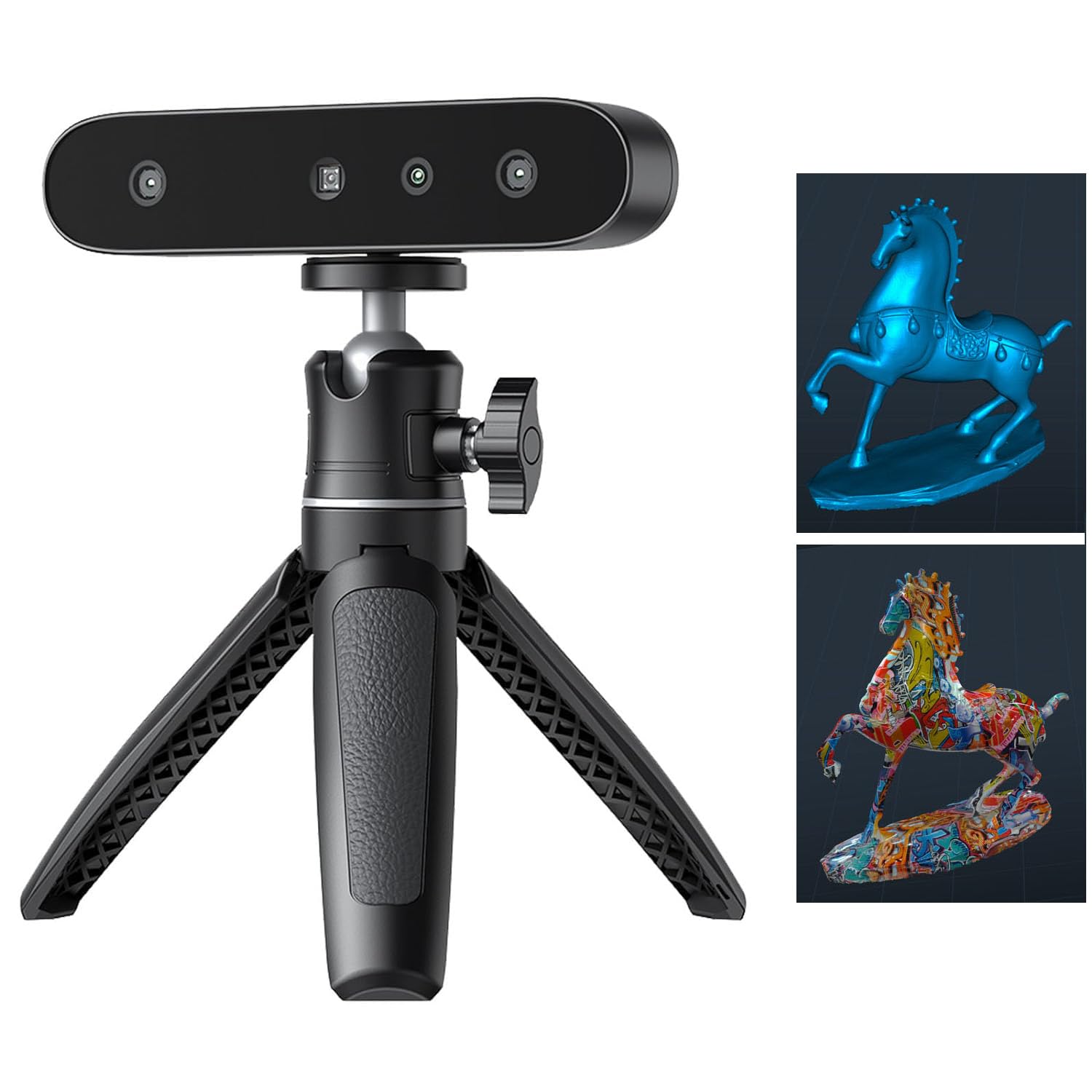
The Creality CR-Ferret SE delivers impressive accuracy and color scanning capabilities at a mid-range price point that works well for both beginners and hobbyists.
Pros
- High accuracy (0.1mm) with anti-shake tracking
- Scans black and metal objects without spraying
- User-friendly software with step-by-step tutorials
Cons
- Software occasionally asks for repeated password access
- Requires proper lighting for best results
- Processing time can be slow on weaker computers
We spent several days testing the CR-Ferret SE, and its lightweight design made scanning sessions comfortable even during longer projects. At just 200 grams, we could easily maneuver it around objects without fatigue.
The anti-shake technology really made a difference – even with our slightly unsteady hands, the scanner maintained tracking impressively well.
The color capture feature truly impressed us. When we scanned several household items, the 2MP camera picked up vibrant, accurate colors that matched the originals. This makes it perfect for creating realistic 3D models where texture and color matter.
The scanning range proved quite versatile too, handling everything from small figurines to larger objects with equal precision.
One feature we particularly appreciated was the ability to scan dark and metallic objects without preparation. Unlike many competing scanners, we didn’t need to coat items with powder first – a huge time-saver.
The software interface was straightforward, though we noticed it occasionally asked for camera access permission more often than necessary. For best results, we found that proper lighting was essential – this isn’t a scanner that performs well in dim conditions.
Revopoint POP3 Plus 3D Scanner
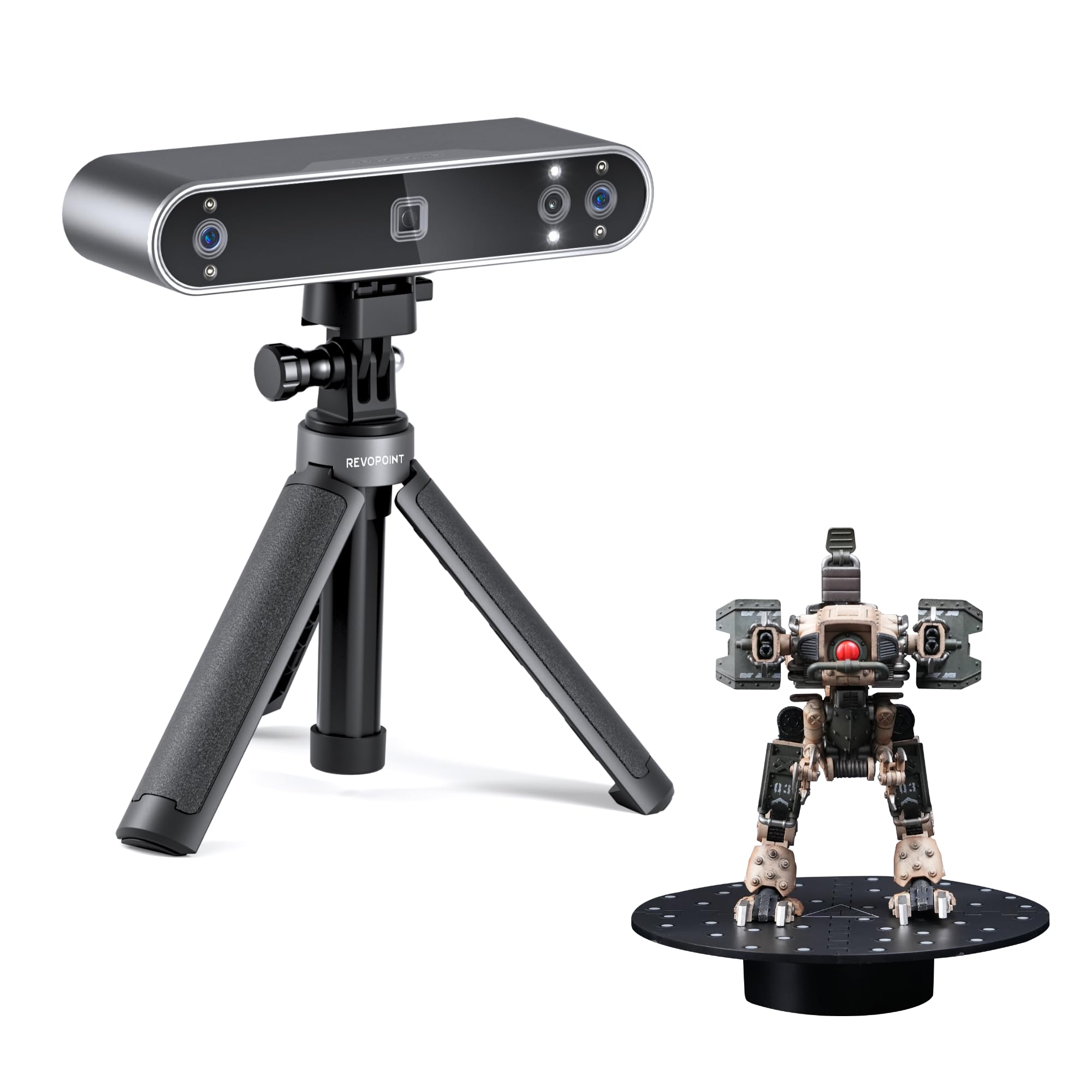
This portable 3D scanner delivers impressive precision and versatility for hobbyists and professionals alike, making it a solid investment for anyone serious about 3D modeling.
Pros
- Exceptional 0.04mm precision with enhanced calibration
- Versatile connectivity across multiple platforms (iOS, Android, Windows, macOS)
- Includes comprehensive software package with free Revo Scan
Cons
- Learning curve for beginners despite user-friendly interface
- May struggle with very small detailed objects
- Requires stable handling despite 9-axis stabilization
We recently tested the Revopoint POP3 Plus and were impressed by its accuracy right out of the box. The scanner feels lightweight yet sturdy in hand, weighing just 190g, which made it comfortable to use during extended scanning sessions.
The color scanning capability truly shines when capturing medium-sized objects. During our tests, the optical zoom function with 1.5x and 2x magnification options delivered noticeably more detailed point clouds compared to standard settings. For hobbyists working on 3D printing projects, this level of detail is a game-changer.
Connectivity was seamless in our experience. The Wi-Fi 6 connection worked flawlessly with our tablets, while the USB-C option provided a reliable alternative for desktop work.
The touch-sensitive buttons are conveniently placed, making it easy to start, pause, and adjust settings mid-scan without disrupting your workflow. The free Revo Scan software handled both scanning and basic editing well, though complex projects might benefit from the QuickSurface trial for CAD conversion.
Revopoint MIRACO Pro Wireless Scanner
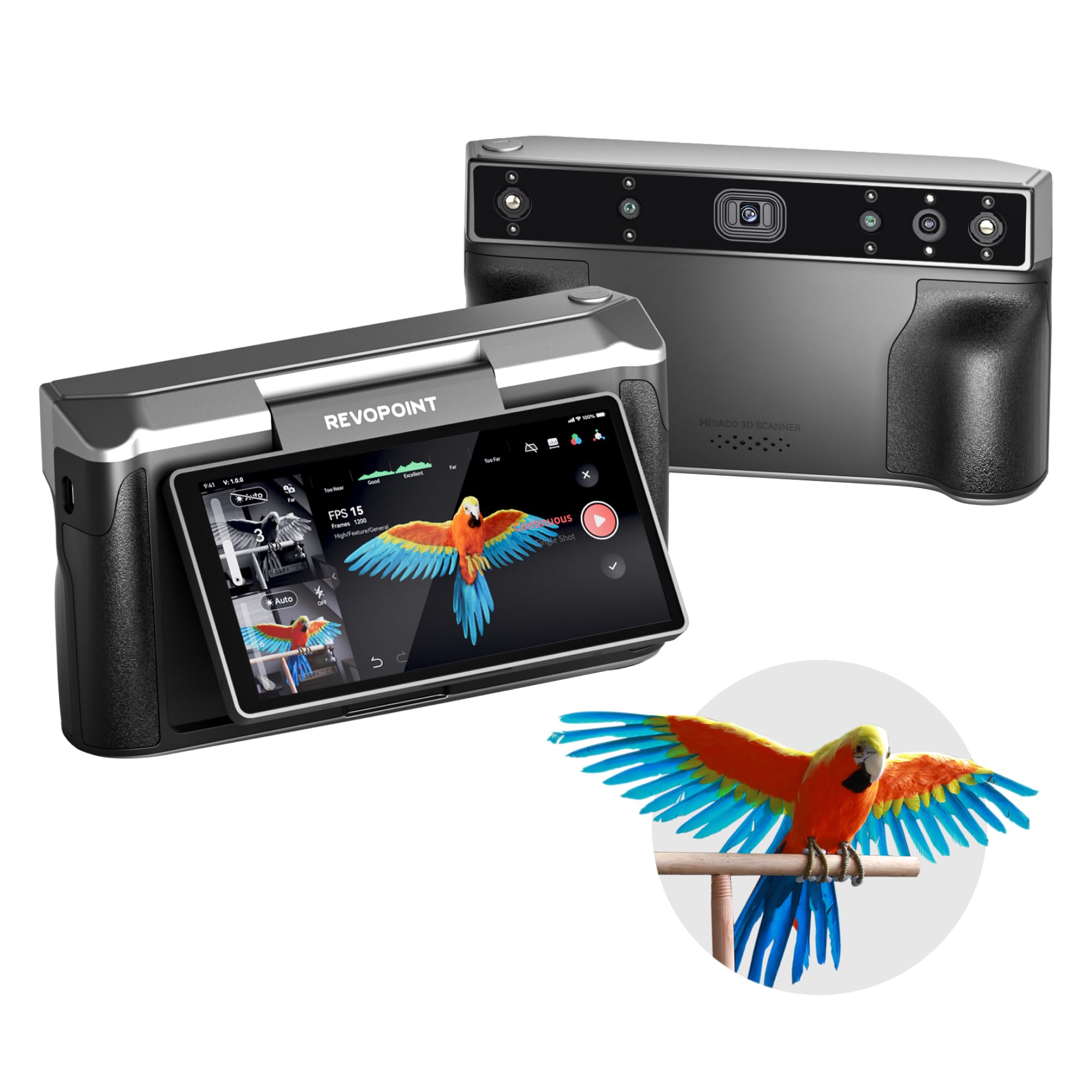
The MIRACO Pro stands out as the most powerful all-in-one 3D scanner we’ve tested, making it worth the investment for serious hobbyists and professionals who need high-quality scans without computer tethering.
Pros
- Completely standalone operation with built-in editing
- Impressive 0.02mm precision with versatile scanning modes
- Large 32GB RAM handles complex models easily
Cons
- Battery life limited to 2 hours of active scanning
- Steeper learning curve than simpler scanners
- Premium price point may be prohibitive for beginners
When we first unboxed the MIRACO Pro, we were surprised by how compact it felt despite packing so much technology. The 6-inch AMOLED touchscreen is bright and crisp, making it easy to see scan details even in well-lit rooms. The screen’s 180° flip feature came in handy when we needed to scan from awkward angles.
Scanning performance impressed us right away. We tested both the Near and Far modes on various objects, from tiny mechanical parts to furniture pieces. The quad-depth camera system switched between modes seamlessly, and the 48-megapixel color camera captured textures with remarkable accuracy. Small details that other scanners missed were clearly visible in our scans.
The onboard processing power is where this scanner truly shines. We completed several complex scans and edited them directly on the device without any lag or crashes. The 32GB RAM handled point clouds with thousands of frames without breaking a sweat. Transferring completed models to our design software via Wi-Fi 6 was quick and trouble-free.
For portable scanning sessions, we found the 750g weight comfortable for extended use. The battery did require recharging after about 90 minutes of intensive scanning, but the fast charge feature got us back to work quickly.
The built-in 256GB storage meant we never worried about running out of space, even when capturing highly detailed models.
Creality CR-Scan Ferret Pro
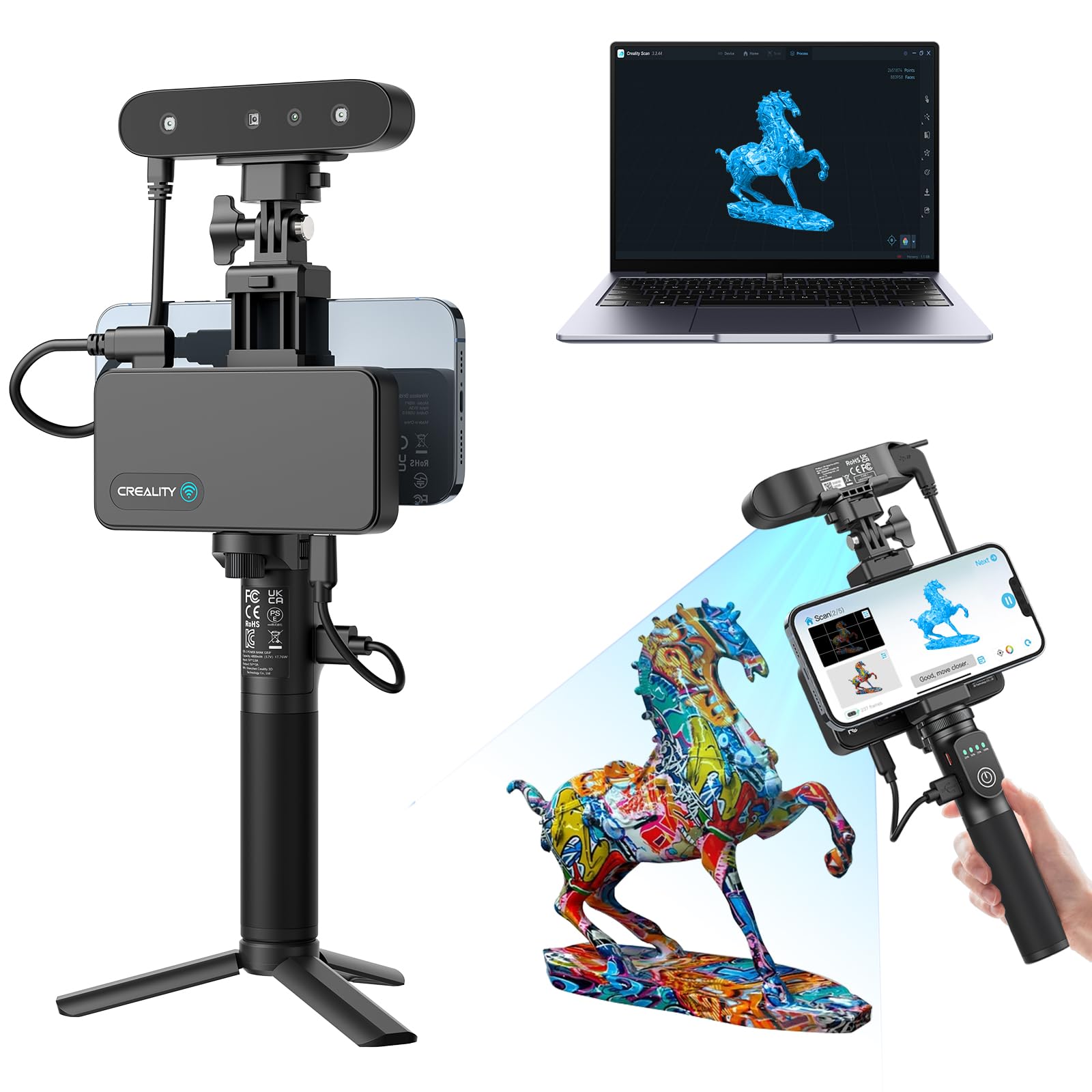
We highly recommend the Creality CR-Scan Ferret Pro for anyone seeking a user-friendly 3D scanner with impressive accuracy and versatility.
Pros
- Extremely easy to use with one-click modeling
- High precision scanning (0.1mm accuracy)
- Works well outdoors and resists tracking loss
Cons
- Requires powerful hardware for best performance
- Limited frame capacity on Android devices
- WiFi connection can occasionally drop during large scans
The Ferret Pro has changed how we approach 3D scanning projects. When we tested it recently, we were amazed by how quickly we could scan medium-sized objects without constant recalibration.
Its 60FPS scanning speed meant we captured a full bust sculpture in under 5 minutes.
What sets this scanner apart is its anti-shake technology. During our hands-on testing, we deliberately moved around quickly, expecting tracking failures. The Ferret Pro recovered almost instantly, maintaining model integrity even with shaky hands. This feature alone makes it worth considering for fieldwork.
We took the scanner outdoors to see if Creality’s claims about sunlight performance held up. The results were impressive – even in bright conditions, the scanner maintained accurate tracking.
The WiFi6 connection kept data flowing smoothly to our laptop without the hassle of cables. For beginners looking to enter the 3D scanning world, this device hits the sweet spot between accessibility and professional-grade results.
Creality Ferret Pro 3D Scanner
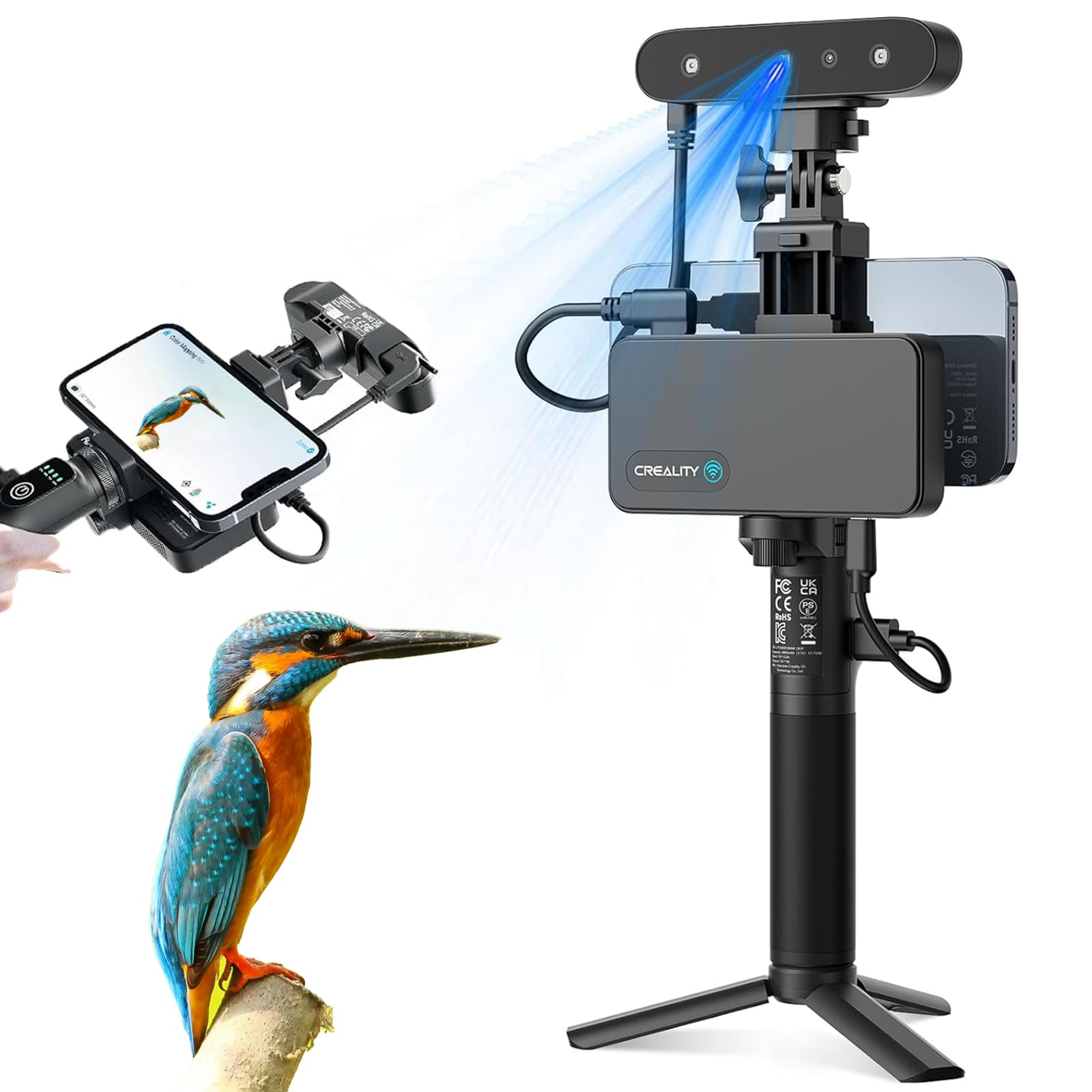
We recommend the Creality Ferret Pro for anyone seeking a portable, user-friendly 3D scanner that delivers impressive results without the learning curve.
Pros
- Anti-shake technology makes scanning much easier for beginners
- Lightweight (105g) and truly portable with wireless operation
- Works on dark and metal objects without spray coating
Cons
- WiFi connection occasionally drops during longer scanning sessions
- Software has a slight learning curve despite “one-click” claims
- Battery life could be better for extended projects
We recently tested the Creality Ferret Pro and were impressed by how well it handled different scanning situations. The anti-shake tracking is not just marketing talk – it actually works!
When scanning a detailed figurine, our slightly shaky hands didn’t ruin the scan like with other models we’ve tried. The scanner captured fine details that we didn’t expect to see.
The wireless capability using WiFi6 made a big difference in how freely we could move around objects. At just 105 grams, we hardly noticed we were holding it during extended scanning sessions.
The color capture is quite good too. When we scanned a painted ceramic piece, the colors came through vivid and true to life.
Setup was straightforward with the included accessories. The power bank-tripod combo is a clever addition that helped us get stable scans when needed.
We tested the scanner with both Windows and Android devices, and it worked equally well with both. The 0.1mm accuracy claim seems legitimate based on our results. For the price point, this scanner offers excellent value for hobbyists and even professional applications.
Buying Guide
When looking for a 3D scanner, there are several key factors to consider. We’ve put together this guide to help you make an informed choice.
Resolution and Accuracy
Resolution and accuracy are perhaps the most important specs to look for.
| Spec | What to Look For | Best For |
|---|---|---|
| Accuracy | 0.1mm or better | Precision work |
| Resolution | 0.5mm or better | Detailed models |
The higher these numbers, the more detail your scanner can capture. Think about what you’ll be scanning to determine the level you need.
Scanning Volume
This refers to the size of objects the scanner can handle. Some scanners work best with small objects, while others can handle room-sized scans.
Consider what you’ll be scanning most often. For small parts, a desktop scanner might be perfect. For larger objects, you’ll need a scanner with greater range.
Software Compatibility
The software that comes with your scanner matters a lot. Look for scanners that include good post-processing tools or that export to formats you can use.
Make sure the scanner works with your operating system and any 3D modeling software you already use.
Price Range
3D scanners range from a few hundred dollars to tens of thousands.
| Price Range | What You Get |
|---|---|
| Under $1,000 | Basic functionality, lower accuracy |
| $1,000-$5,000 | Good for most professional uses |
| $5,000+ | High precision, specialized features |
Set a budget based on your needs, not just on what’s cheapest.
Frequently Asked Questions
Navigating the world of 3D scanners involves understanding various technical specifications, price points, and use cases. We’ve compiled answers to the most common questions to help you make informed decisions.
What are the best 3D scanners for high-precision applications?
For high-precision work, industrial-grade scanners like the ATOS series from GOM and Creaform’s HandySCAN BLACK Elite lead the market. These systems offer accuracy down to 0.025mm and capture millions of data points per scan.
The Hexagon Absolute Scanner and Artec Space Spider also excel in precision engineering and quality control applications. They provide accuracy within microns, which is essential for aerospace, automotive, and medical device manufacturing.
We find that metrology-grade scanners with blue or structured light technology typically deliver the best results for high-precision work. Their ability to capture fine details makes them ideal for reverse engineering and inspection tasks.
Which 3D scanners are most suitable for 3D printing?
Desktop scanners like the EinScan SE and SP series work exceptionally well with 3D printing workflows. They balance affordable pricing with good accuracy (0.1mm range) that matches most consumer and prosumer 3D printers.
The Revopoint POP 2 and Creality CR-Scan Lizard represent excellent entry points for 3D printing enthusiasts. These scanners capture objects with sufficient detail for reproduction while maintaining user-friendly interfaces.
For professional 3D printing applications, the Artec Eva and Leo provide high-resolution scans that translate well to detailed prints. The seamless workflow between scanning and printing is critical for efficient production.
Are there any mobile apps that can perform effective 3D scanning?
Yes, several smartphone apps now offer impressive 3D scanning capabilities.
Polycam for iOS uses LiDAR sensors in newer iPhones to create detailed 3D models quickly and effectively.
Qlone and Scandy Pro provide good results on both Android and iOS devices. These apps use photogrammetry techniques to construct 3D models from multiple photographs, though they work best in well-lit environments.
We’ve seen significant improvements in mobile scanning technology, though they still can’t match dedicated hardware. For casual use or initial conceptualization, these apps offer a convenient and affordable entry point.
On what criteria should one base their decision when purchasing a 3D scanner?
Accuracy requirements should be your primary consideration. Define the minimum level of detail you need to capture before exploring options.
Budget constraints will naturally narrow your choices. Professional systems range from $5,000 to $100,000+, while consumer options start around $400.
Object size and material properties matter significantly. Some scanners excel with small objects but struggle with larger items. Dark, shiny, or transparent surfaces challenge many scanning technologies.
Portability needs may influence your decision if you plan to scan in various locations. Handheld scanners offer flexibility, while fixed systems often provide better precision.
What is the price range for professional-grade 3D scanners?
Entry-level professional 3D scanners typically start around $5,000 to $10,000. The EinScan Pro 2X Plus and Artec Eva Lite fall into this category, offering good performance for many business applications.
Mid-range professional systems cost between $15,000 and $30,000. The Artec Eva, Creaform Go!SCAN SPARK, and similar models provide excellent versatility and accuracy for most industrial needs.
High-end metrology-grade scanners often exceed $50,000, with some systems reaching $100,000 or more. These include the GOM ATOS series, Faro Focus laser scanners, and Hexagon absolute arms with integrated scanning.
How do 3D scanning technologies vary across different industries?
In manufacturing, laser and structured light scanners dominate quality control processes. These technologies offer the precision needed for comparing physical parts against CAD designs.
The healthcare sector relies on CT and MRI-based volumetric scanning for internal imaging. Surface scanning using structured light helps create custom prosthetics and orthotics.
Architecture and construction industries favor large-format scanners like terrestrial LiDAR systems. These capture entire buildings and sites with millimeter accuracy for BIM (Building Information Modeling).
Cultural heritage preservation uses photogrammetry and structured light scanning to digitally archive artifacts and monuments. The non-contact nature of these methods protects delicate historical items.
